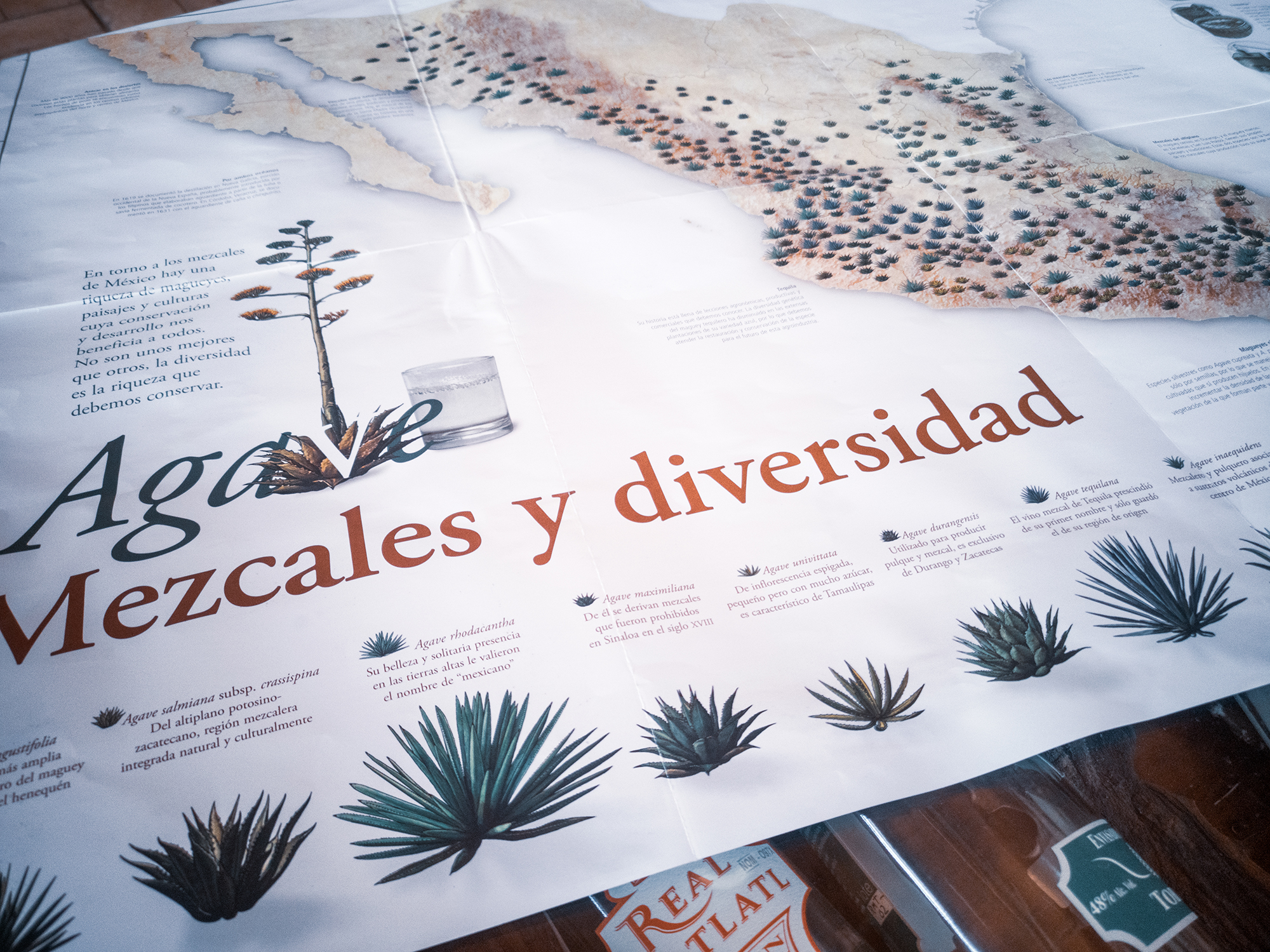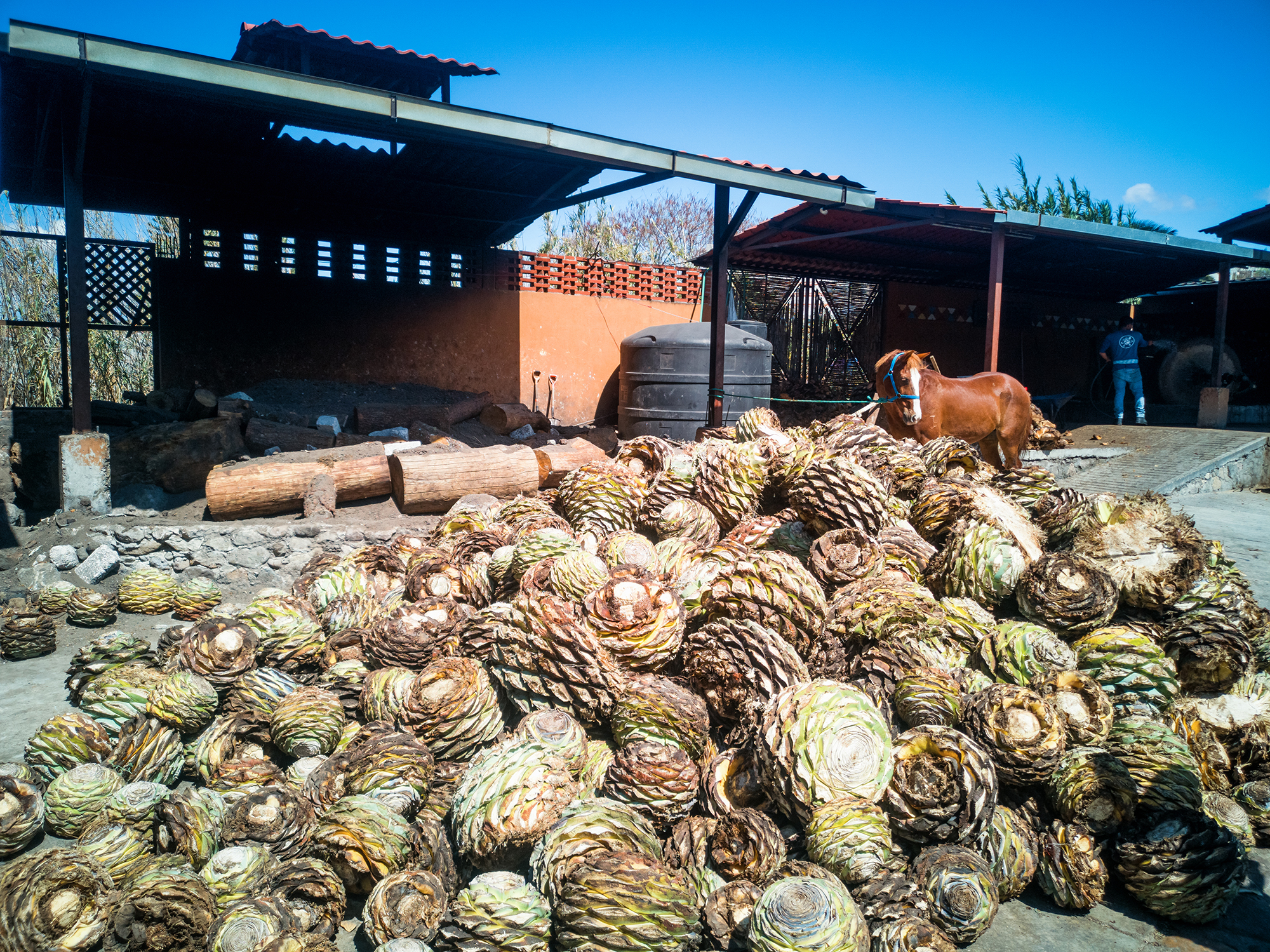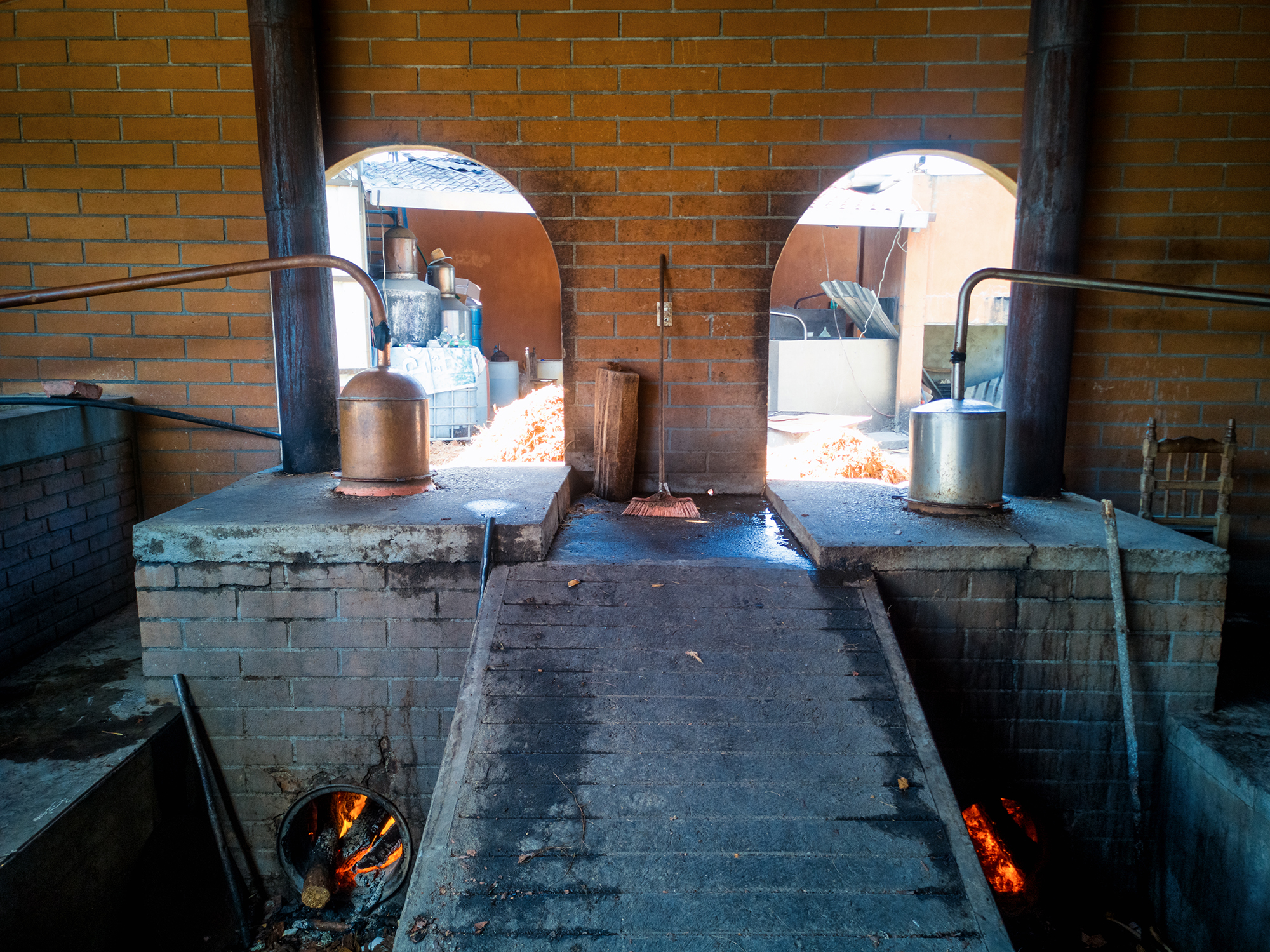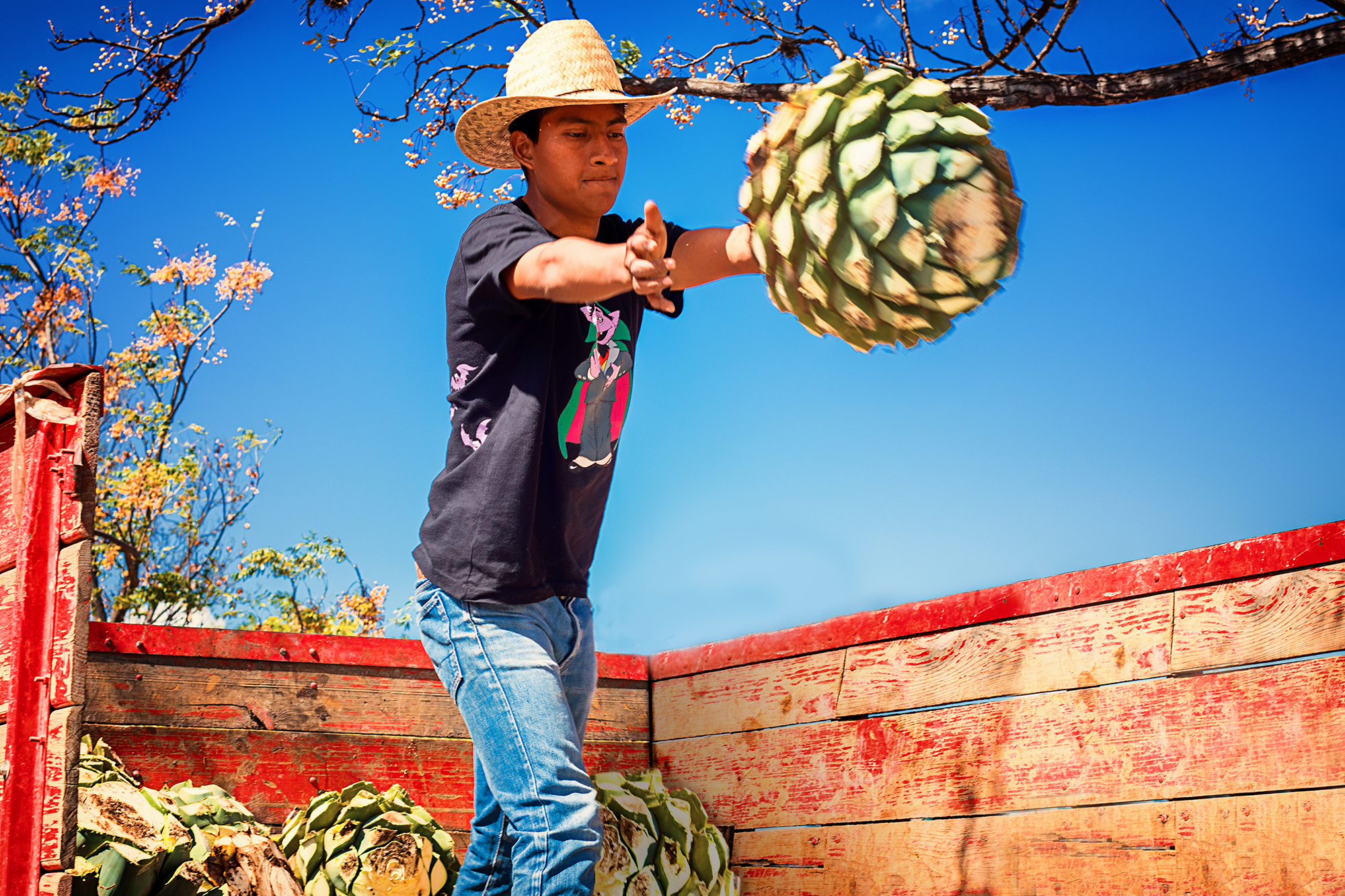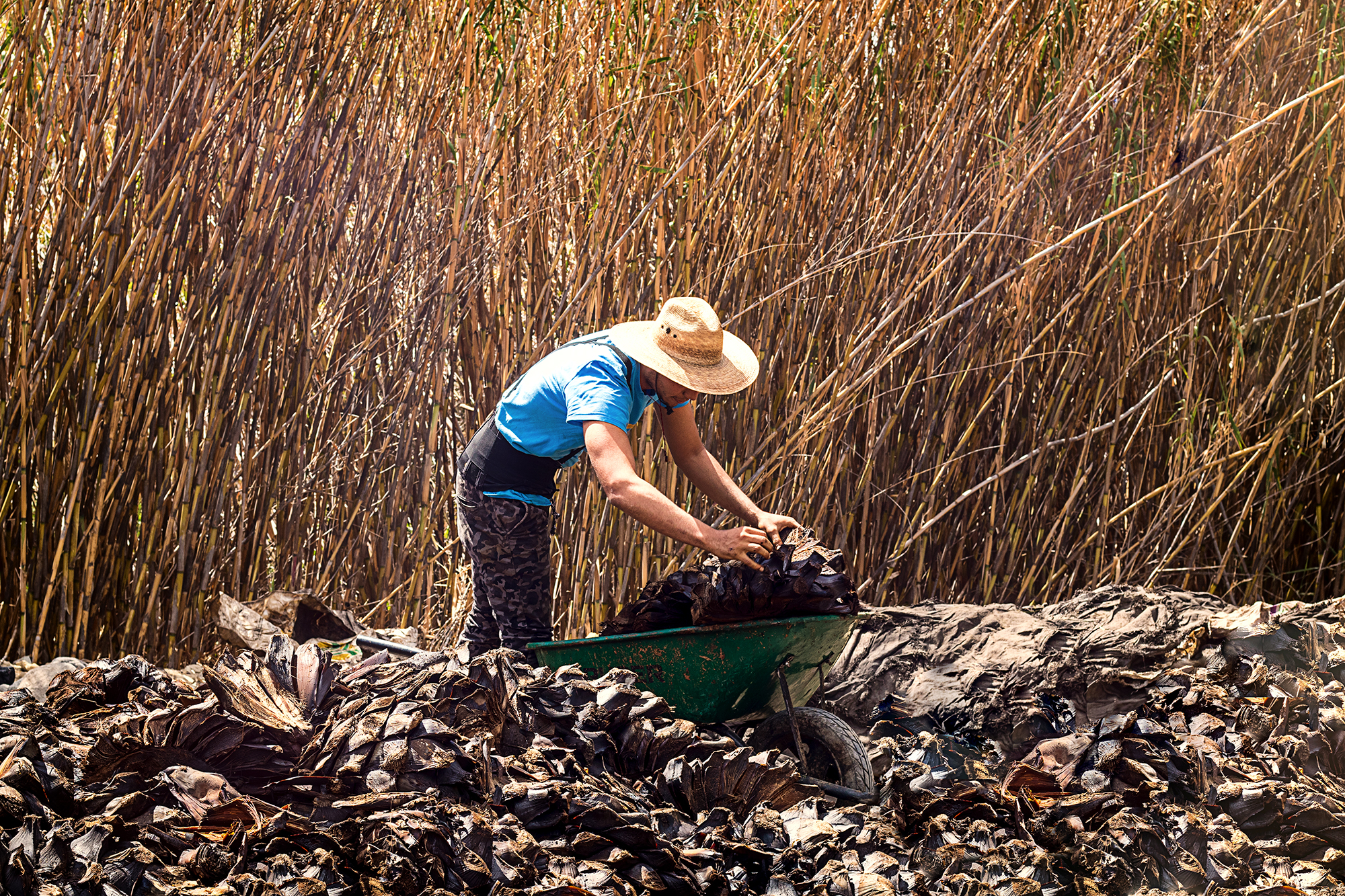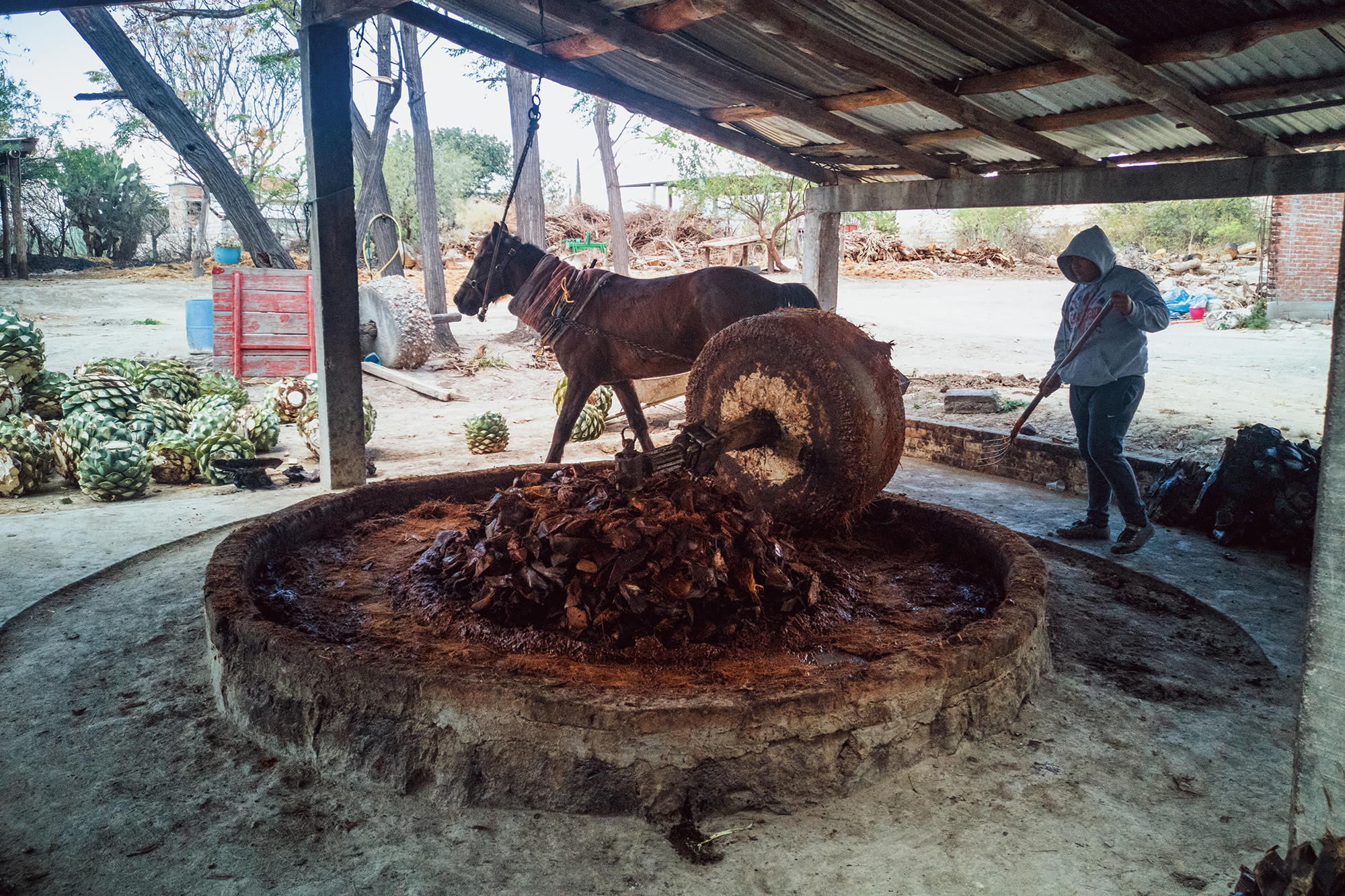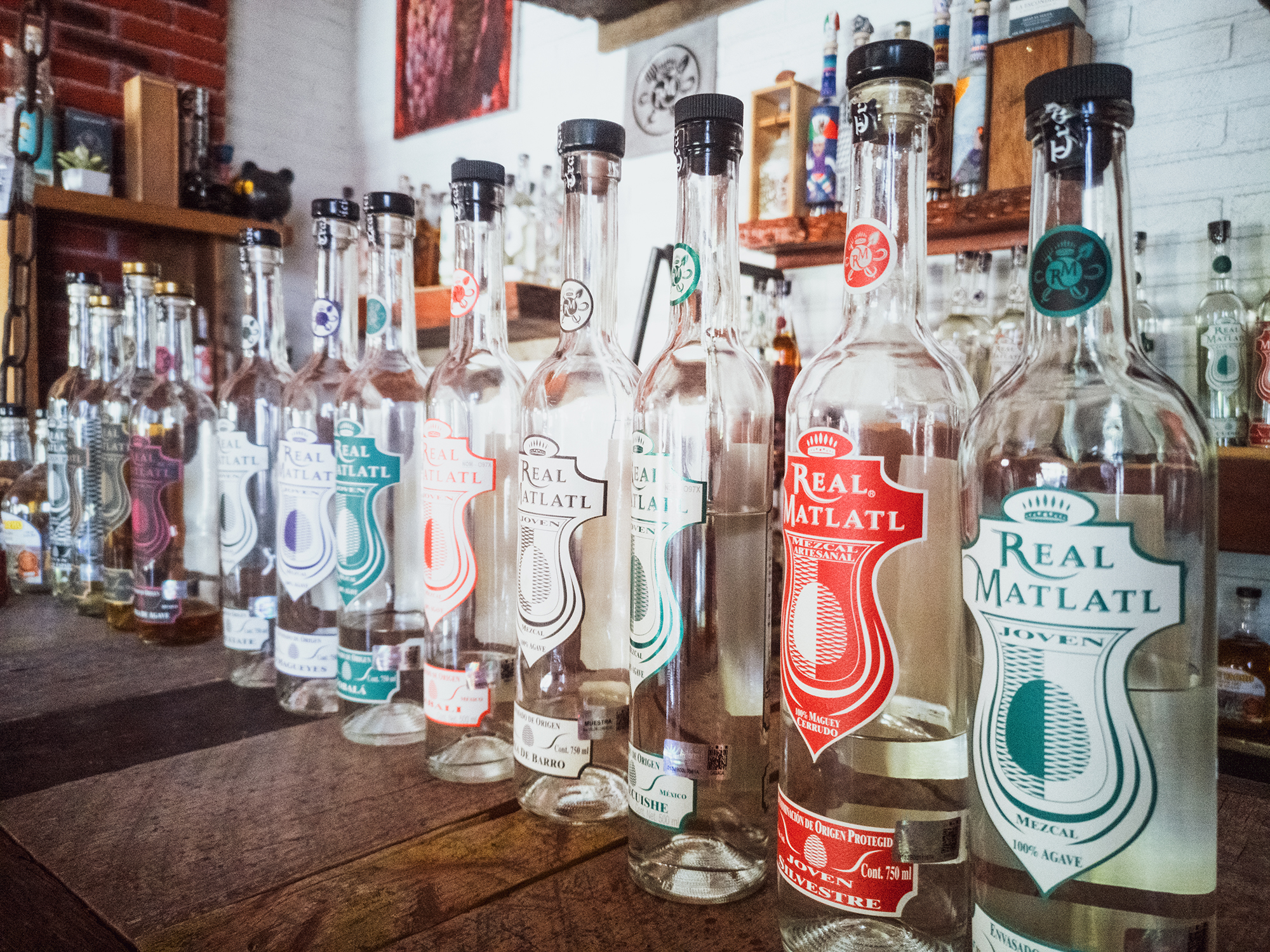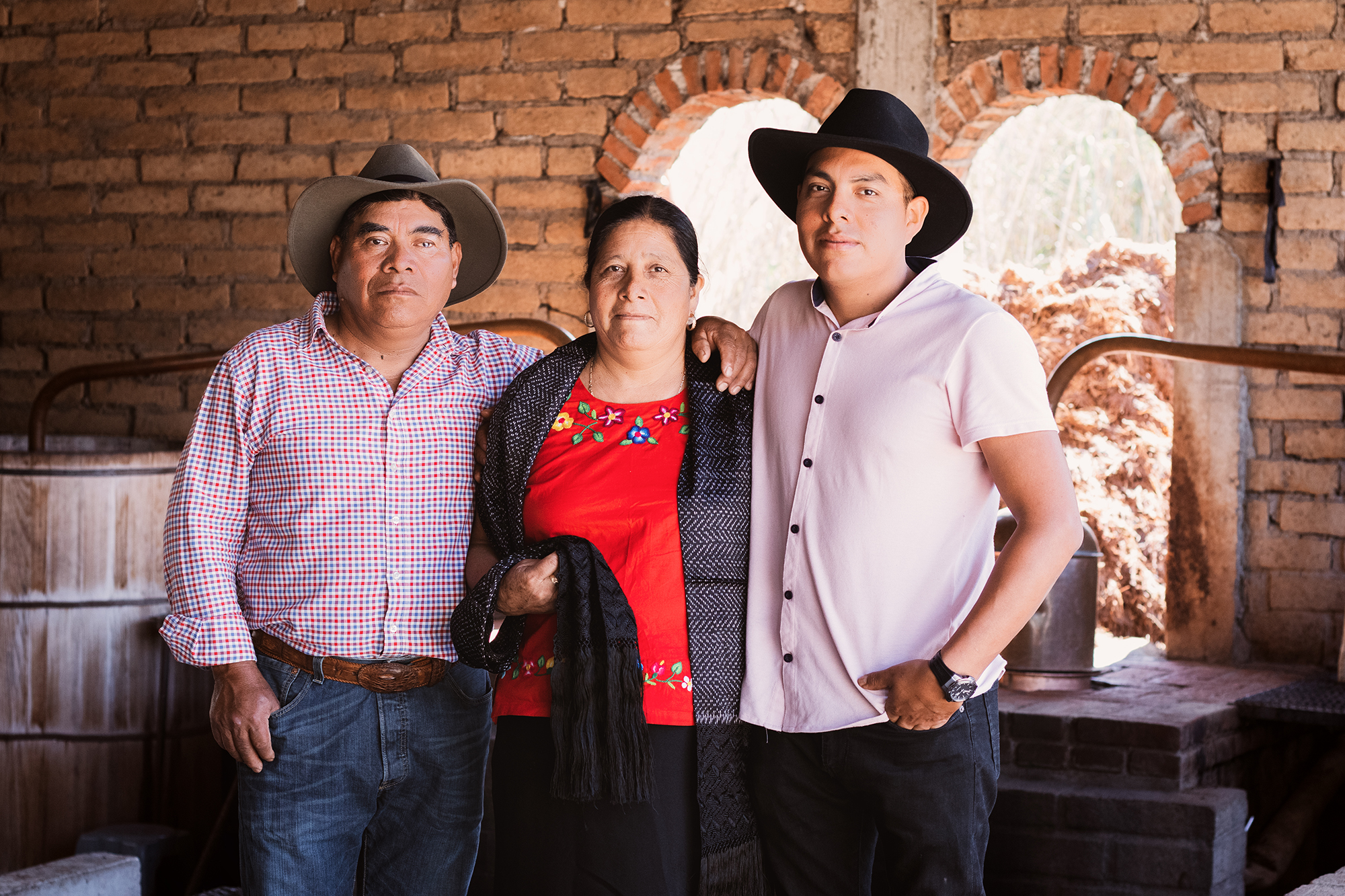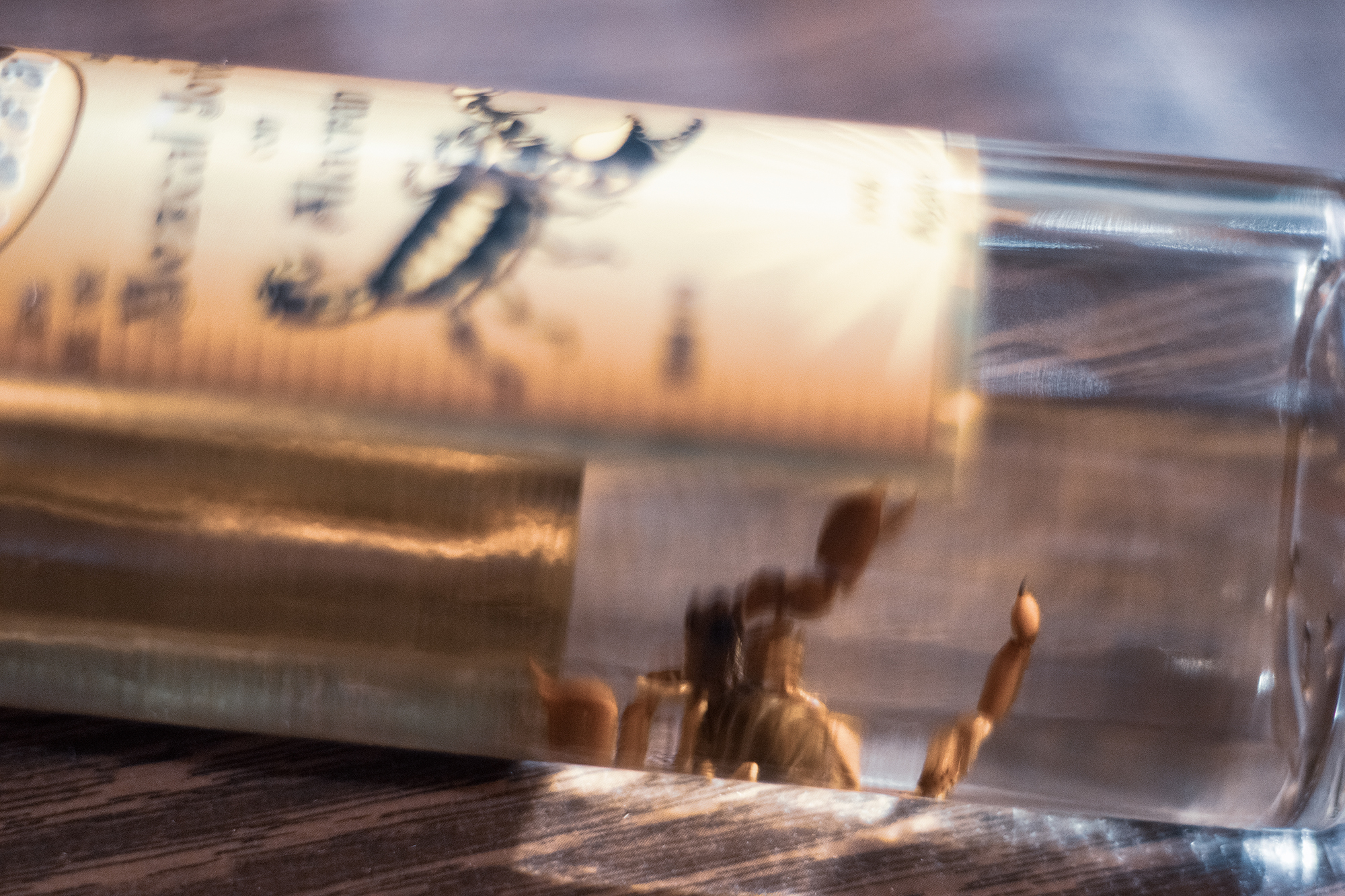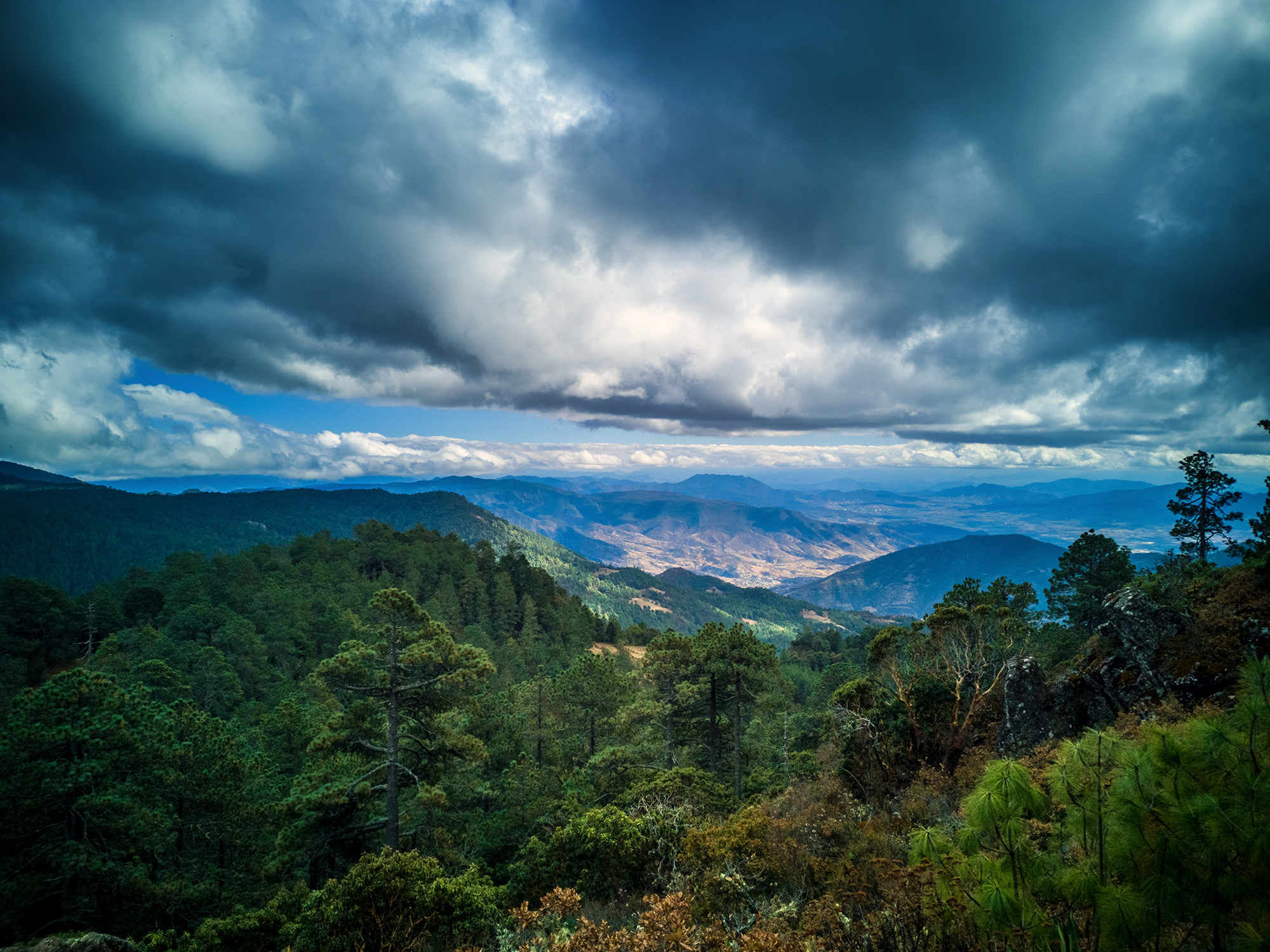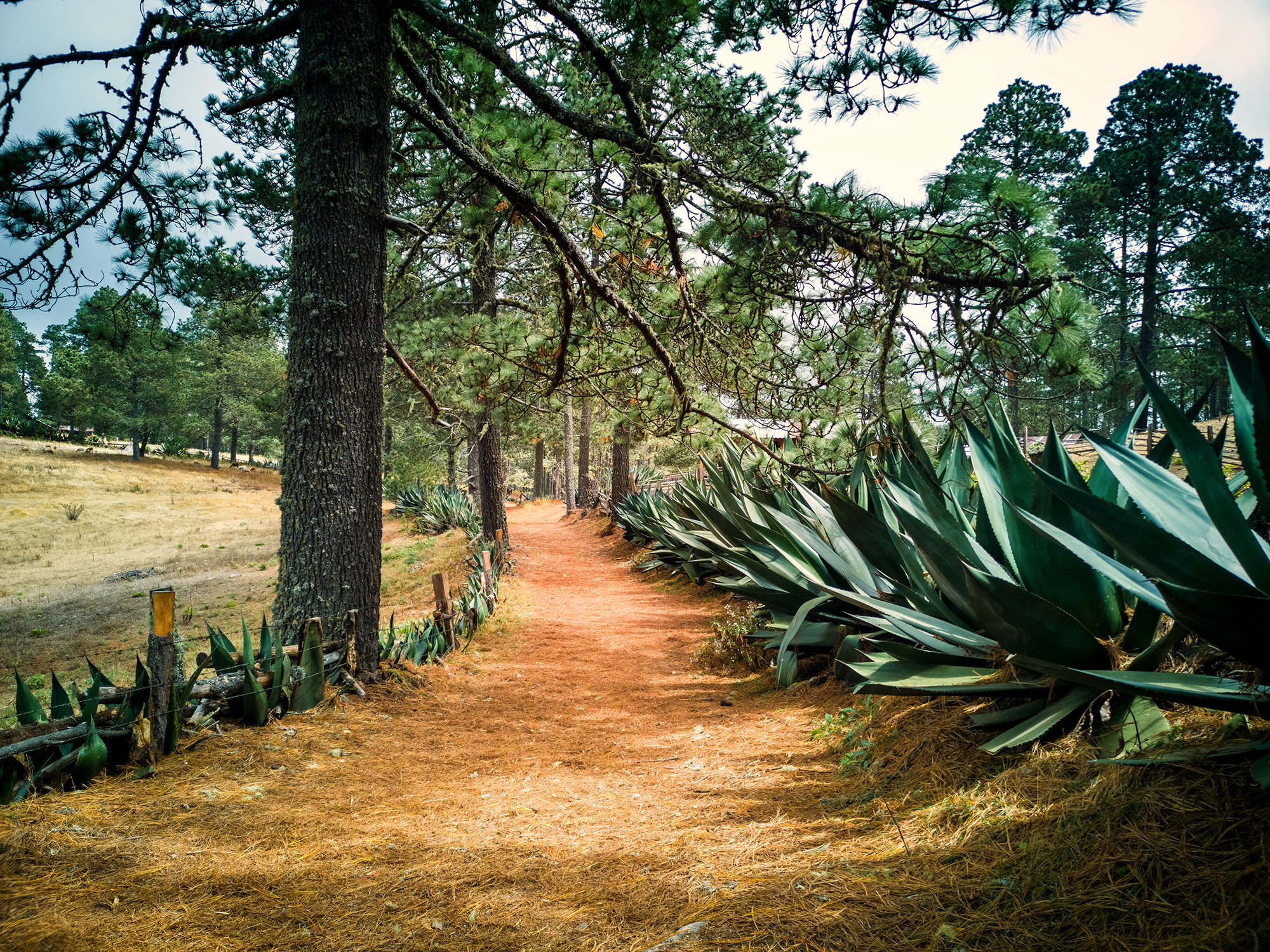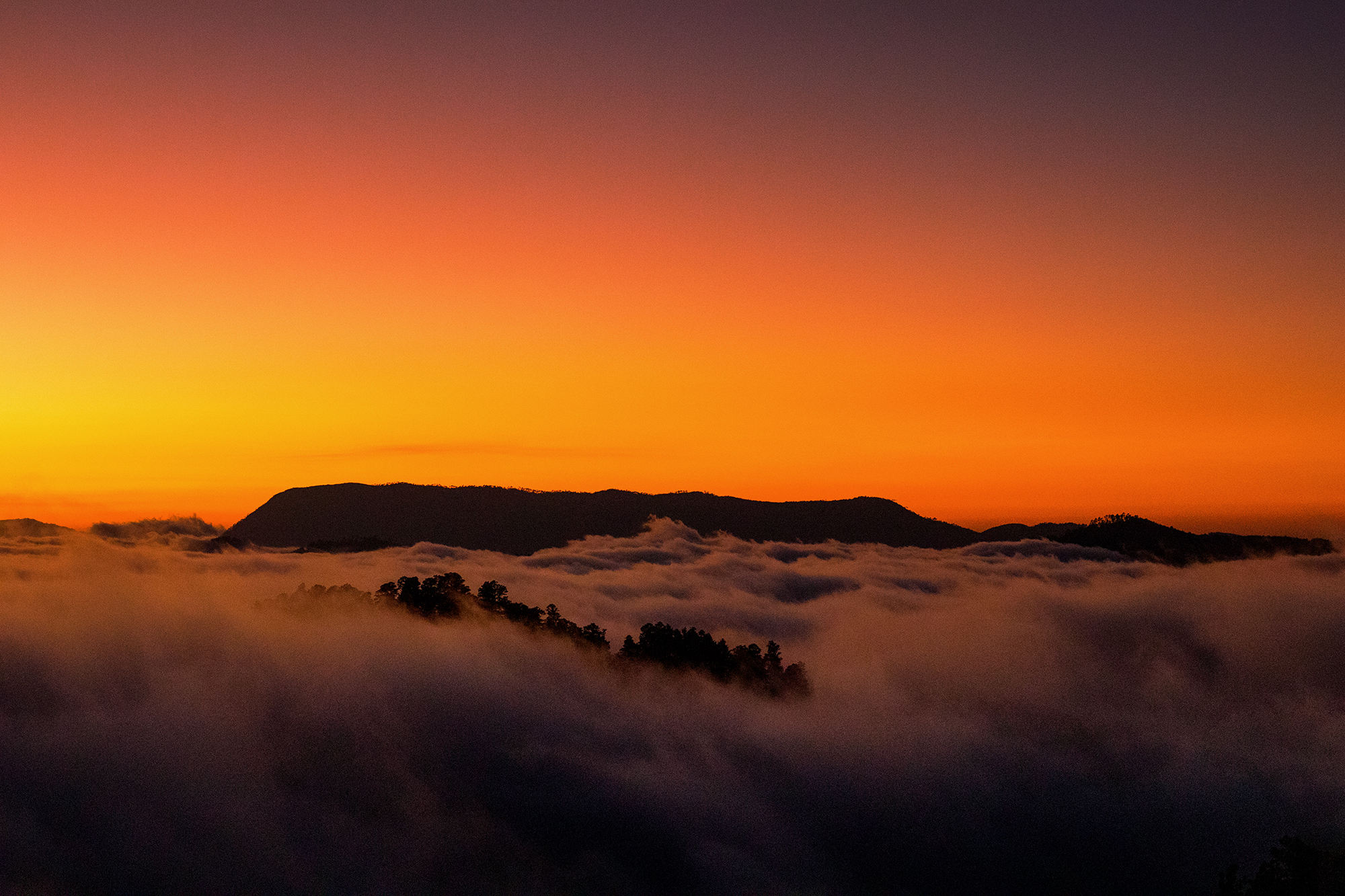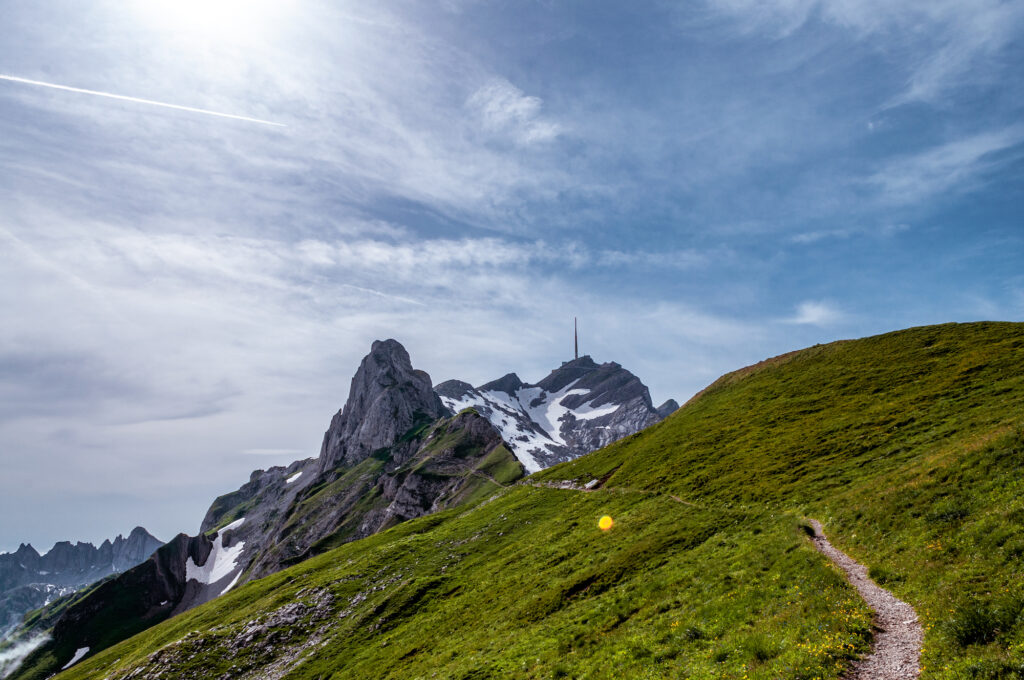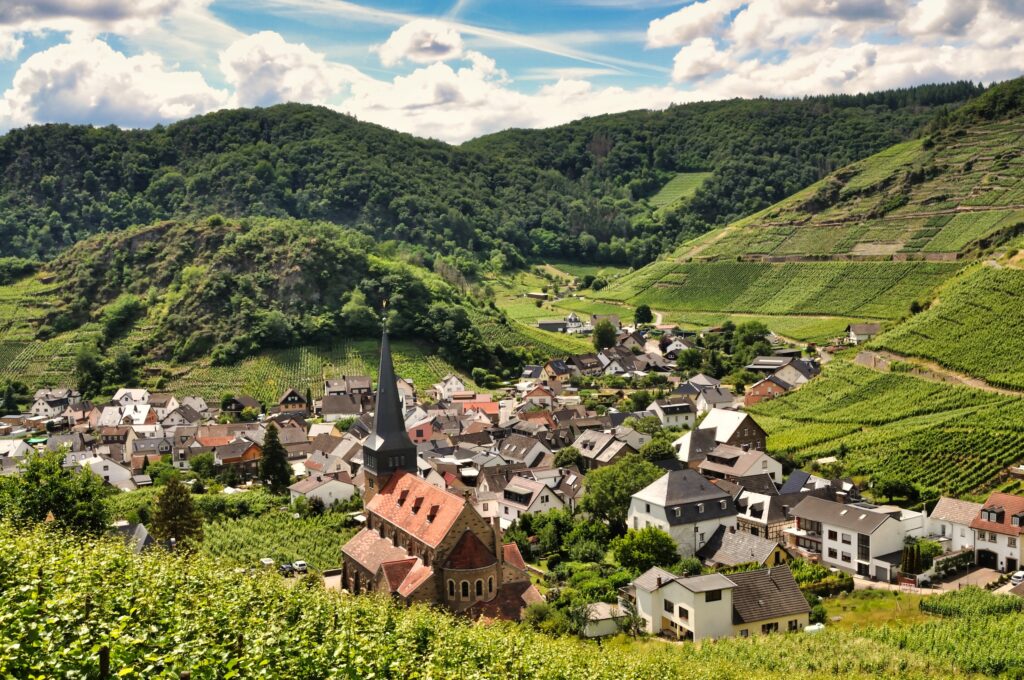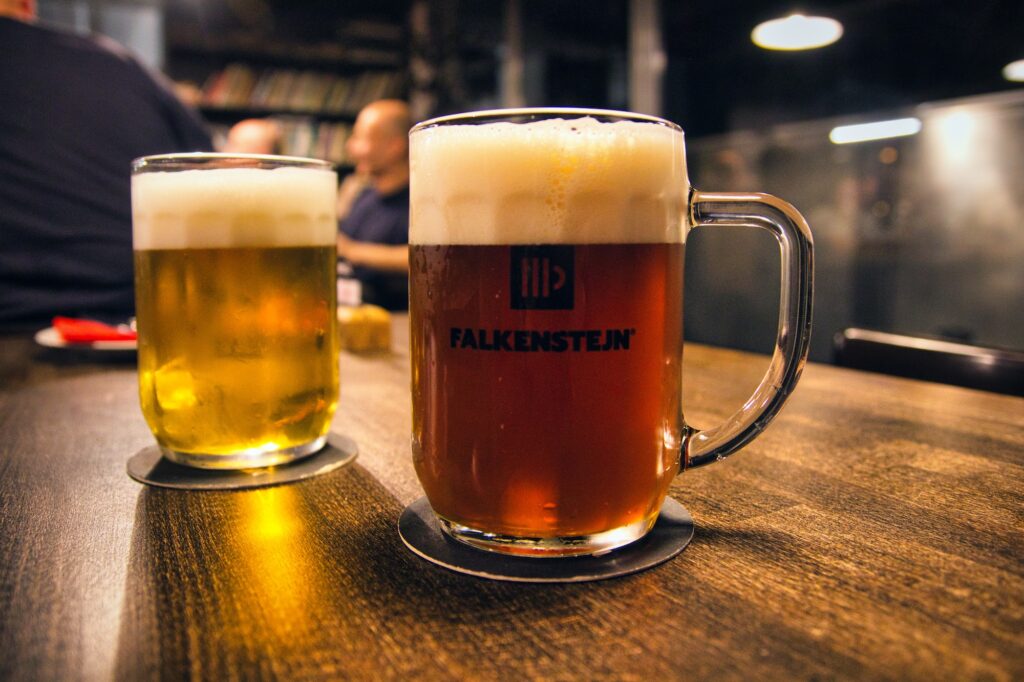Photos: Yvonne Hartmann
In the state of Oaxaca, the agave plant is treated as a revered gift from the gods. Across the state capital its image is adorned everywhere, from buildings facade, to jewellery and clothes. Outside in the sprawling countryside, it can be seen for miles around in varying sizes, in fields, mountain paths. The locals have been using agave, or magueys, to distill drinks for over thousands of years, and it is the primary ingredient in the manufacturing of mezcal.
The smooth, refined taste of mezcal differs throughout the region. The main property that stands out from mezcal is its purity, as is the case with many great spirits. Even those who make it claim that mezcal has many health benefits, including greater blood circulation and that it does’t cause hangovers. Its purity is down to the way in which mezcal is made. The piña — the root of the agave — is cooked in a giant pit, crushed, fermented and then distilled. That’s it. The individual taste is then defined by the type of agave, the fermentation and then the way in which it is distilled, being whether its in copper or clay stills.
Mezcal isn’t the only drink that’s derived from the agave. There is of course the world-famous tequila, which is technically a type of mezcal, that comes from a specific type of blue agave and only produced within a certain area. The locals will tell you that the main difference between the two is that mezcal is artisanal and that tequila, mainly, is industrial. Although, you should really take that with a slice of lemon, as there are also many great artisanal tequilas out there.
The very first fermented drink to have been derived from the agave was called pulque, which dates back thousands of years. Still manufactured to this very, pulque is derived from the agaves sap, creating a milky-beer like drink. Far less common due to its long manufacturing process, pulque is in a lot of ways even more artisanal than mezcal, but can still be found throughout Oaxaca.
Camino de Mezcal
The entire valley surrounding Oaxaca serves as a divine landscape of rolling greens, intertwined with dusty, desert-like panoramas, with a wall of mountains plastered onto the background. The heart of Mezcal lies here in a small town just outside of Oaxaca called Santiago Matatlán. Here you’ll find an abundance of palenques, farms that make mezcal, along with many mezcalerias where you can taste and buy the wares of the local farmers.
Throughout the region you’ll find many palenques of varying sizes, some taking a more industrial scale, others just a small operation on the side of the road with a couple of workers and a horse, grinding down agaves on a daily basis.
There are many ways to go out and explore this fabulous region, the only problem is that hiking is not one of them. The best way to get around is to hire a car, or find a private tour guide to take you around. We can personally recommend Ultimate Mezcal Tasting: Oaxaca, run by Antonio Escobedo Araos, a local expert and certified mescal scholar. Antonio’s tour is very reasonably priced and is customisable to your own wishes. You can visit select palenques, meet the owners, get a proper tasting guide, in addition to getting lunch cooked by Antonio himself in the not-to-be-missed pueblo Villa de Mitla.
Recommended Palenques
Many of the local mezcal manufacturers have an open-door policy and are very willing to showing you around. There are countless to discover, so here we’re not providing an exhaustive list, but just a few tips from personal experiences:
This family run farm has been making mezcal for many generations. The family of Doña Sabi, Don Mario, and their son Antonio, having kept the traditional approach to mezcal production, while bringing the brand and establishment into the modern era. The farm itself embellishes this mix of the old and new, where the horse — bizarrely named Taliban — and grinder sit set to the piña pit, and copper stills. The family are warm, open and kind and are happy to share in their age-old, rich mezcal tradition.
Don Tacho, the man who founded Real Matlatl, is almost like a legend within these parts. Here at Real Matlatl a giant portrait of his image overshadows the entrance. If you’re lucky, you’ll catch a glimpse of him wandering around the farm, machete in hand. Real Matlatl is a more upmarket and modern palenque, that still makes its mezcal in the artistinal way. Real Matlatl make a whole variety of mezcals, and if you get the chance, try to book in a sampling class – which gives you the option to pretty-much drink your way through their incredible range of mezcals.
OK, at El Rey you’re not going to get an authentic experience. So why include it I hear you ask? Well this one comes part-and-parcel when you book a day trip to Hierve el Agua, which is a must-see in the area. More of a sales-showroom than anything else, El Rey gives you the opportunity to really let go, and sample as many types of mezcals and tequilas as you wish. The staff here are very knowledgable, allowing you to find the right type of mezcal for you – scorpions and worms included.
Hikes
So what’s with the hiking I hear you ask? It’s not recommended at all to wander around this area and there are no trails through the valley. However, lurking in the background in the imposing Sierra Norte mountains, home to protected pueblos mancomunados is a whole world of hiking options. At an incredible 3,300 metres above sea-level, the Sierra Norte are not to be taken lightly, but the journey here is not one to be missed.
There are a few things you need to know about the pueblos mancomunados. Firstly this protected community rely on eco-tourism, and as such you cannot tour the region without a guide. However, all of this is easily arrangeable at the Centro Ecoturístico Cabañas in Cuajimoloyas. You can also arrange accommodation here, or pre-book in advance using booking.com.
You can also arrange tours with Expediciones Sierra Norte, however the agency — albeit very friendly — is also massively overpriced and unnecessary. If you can make your way to either Cuajimoloyas or Benito Juarez, you can easily plan your own adventure with the help of the local team. The other benefit of doing this is that the locals who look after the village earn more, and don’t lose commission fees to the agency. If you really want to book a tour, then we recommend you visit the Oaxaca Lending Library, and check what tours they have on offer.
What options are available here then? You can take a popular day hike around Cuajimoloyas, where you can find out how the locals have survived and lived over the past few centuries, the plants they live off, and even find out about the trout they transport up and farm all year round. There are other multi-day routes that take you to Latuvi and Amaltlan, where you can even visit some pulque farms along the way. If you want more information to these multi-day hikes then the following blogs give you more in-depth information (HERE and HERE).
There’s so much more to Oaxaca, including all the food and drink, and culture and art the state capital has on offer. Take your time and dive right in.


